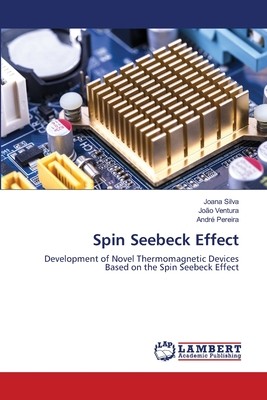
- We will send in 10–14 business days.
- Author: Joana Silva
- Publisher: LAP Lambert Academic Publishing
- ISBN-10: 6202675462
- ISBN-13: 9786202675468
- Format: 15.2 x 22.9 x 0.9 cm, minkšti viršeliai
- Language: English
- SAVE -10% with code: EXTRA
Reviews
Description
The Spin Seebeck Effect (SSE) was first reported in 2008 and consists in the generation of a spin current in a paramagnetic metal (PM), caused by an applied thermal gradient in a ferromagnet (FM). The injected spin current is converted into a transverse electric voltage by means of the Inverse Spin Hall Effect (ISHE), which is a result of a spin-orbit interaction of the electrons in the conductive layer. The SSE devices, due to their relatively simple structure, provide an easy scaling-capability, which attributes useful characteristics for thermoelectric and sensing applications to these devices. In this work, three different FM materials were prepared and characterized (YIG, La0.9Ca0.1MnO3 and NiO) and SSE devices were produced. An experimental set-up was designed and developed to measure the SSE output of these devices. Measurements were carried out at room temperature and up to 50°C and an SSE output of up to 0.25 µV was obtained.
EXTRA 10 % discount with code: EXTRA
The promotion ends in 21d.08:10:49
The discount code is valid when purchasing from 10 €. Discounts do not stack.
- Author: Joana Silva
- Publisher: LAP Lambert Academic Publishing
- ISBN-10: 6202675462
- ISBN-13: 9786202675468
- Format: 15.2 x 22.9 x 0.9 cm, minkšti viršeliai
- Language: English English
The Spin Seebeck Effect (SSE) was first reported in 2008 and consists in the generation of a spin current in a paramagnetic metal (PM), caused by an applied thermal gradient in a ferromagnet (FM). The injected spin current is converted into a transverse electric voltage by means of the Inverse Spin Hall Effect (ISHE), which is a result of a spin-orbit interaction of the electrons in the conductive layer. The SSE devices, due to their relatively simple structure, provide an easy scaling-capability, which attributes useful characteristics for thermoelectric and sensing applications to these devices. In this work, three different FM materials were prepared and characterized (YIG, La0.9Ca0.1MnO3 and NiO) and SSE devices were produced. An experimental set-up was designed and developed to measure the SSE output of these devices. Measurements were carried out at room temperature and up to 50°C and an SSE output of up to 0.25 µV was obtained.


Reviews